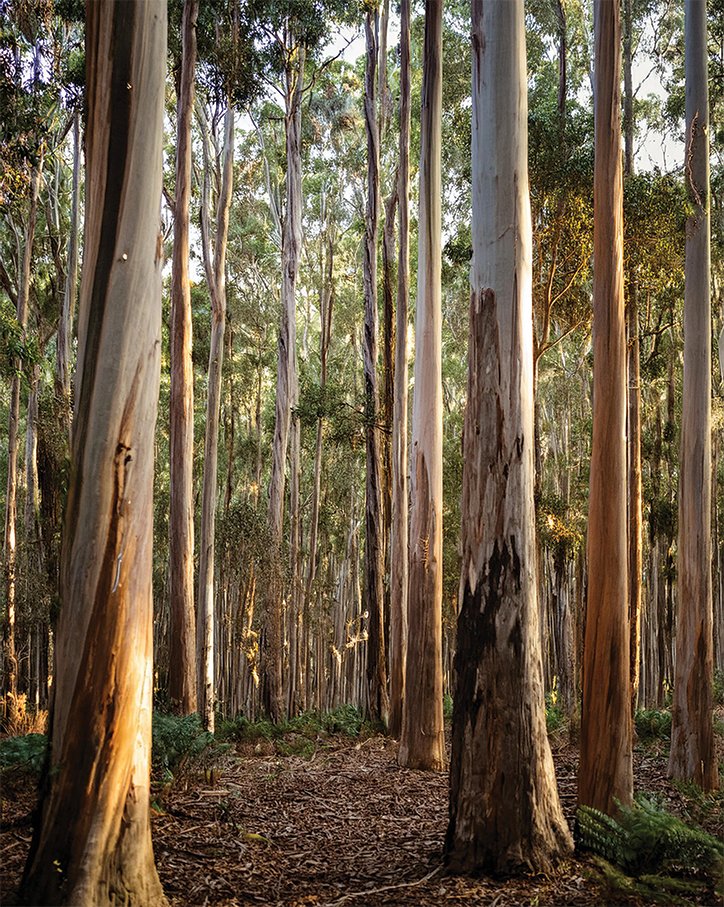Spotted Gum
Spotted Gum, or Corymbia maculata, is a highly sought-after Australian hardwood known for its striking appearance and exceptional durability. Its color palette varies from rich, dark browns to light, reddish hues, often with a wavy, interlocked grain that creates a visually dynamic texture. This timber is particularly noted for its natural resistance to decay and fire, making it an excellent choice for structural and outdoor applications.
Spotted Gum is renowned for its strength, density, and vibrant colour palette, contributing to its widespread use in both modern and traditional architecture.
Appearance
Spotted Gum is renowned for its distinct and captivating appearance, making it a popular choice among architects, designers, and homeowners. This Australian hardwood showcases a unique blend of colors, textures, and markings that contribute to its overall charm.
The timber's color palette ranges from pale gray and light brown to rich chocolate hues, creating a delightful variation throughout the wood. These natural tones, combined with subtle hints of olive and reddish-brown, add depth and character to any space. The timber's coloring often displays sporadic spots and streaks, hence the name "Spotted Gum."
One of the most striking features of Spotted Gum is its impressive grain pattern. The grain can be interlocked, wavy, or straight, and it often exhibits a stunning display of distinctive markings, including gum veins, insect trails, and occasional knots. These intricate details contribute to the timber's visual interest and provide a unique and organic aesthetic.
The unique appearance of Spotted Gum infuses any space with warmth and character, reflecting the natural beauty of Australia's diverse landscapes.
Applications
Spotted Gum offers a multitude of applications across various industries. Its unique properties make it highly sought after for both interior and exterior use, as well as in commercial and residential construction projects.
Its exceptional durability, resistance to decay, and natural resistance to termites make it an ideal choice for outdoor structures such as decking, fencing, and cladding. It can withstand harsh weather conditions, including extreme heat and rain, without compromising its structural integrity.
Spotted Gum possesses an attractive and distinctive appearance, with a rich blend of colors ranging from pale greys and browns to deep reds. This makes it a popular choice for interior design applications, including wall paneling and furniture production. Its natural beauty adds warmth and character to any space, creating a welcoming and aesthetically pleasing environment.
This species has gained popularity in the manufacturing of high-quality furniture and joinery. Its dense and robust nature ensures longevity, making it suitable for crafting durable tables, chairs, cabinets, and other wooden fixtures.
Workability
Spotted Gum is highly regarded for its workability.
The timber is relatively easy to work with, whether it's being sawn, shaped, or machined. It has a moderately coarse texture and a straight grain, which facilitates smooth cutting and shaping. This characteristic allows for precise detailing and customization, making it ideal for a range of applications, including decking, flooring, cladding, and furniture.
Furthermore, Spotted Gum responds well to both hand and machine tools. It can be easily drilled, nailed, and screwed without excessive splitting or cracking, thanks to its natural resilience. This makes installation and assembly processes more efficient and hassle-free.
Another aspect contributing to the workability of Spotted Gum is its excellent stability. It has a relatively low shrinkage rate, meaning it maintains its shape and size under varying environmental conditions. This stability reduces the risk of warping, twisting, or cupping, ensuring long-term durability and maintaining the structural integrity of the finished product.
Additionally, the timber accepts a range of finishes and coatings exceptionally well. It can be stained, oiled, or painted to achieve the desired aesthetic effect, while still showcasing the timber's unique grain patterns and color variations.





